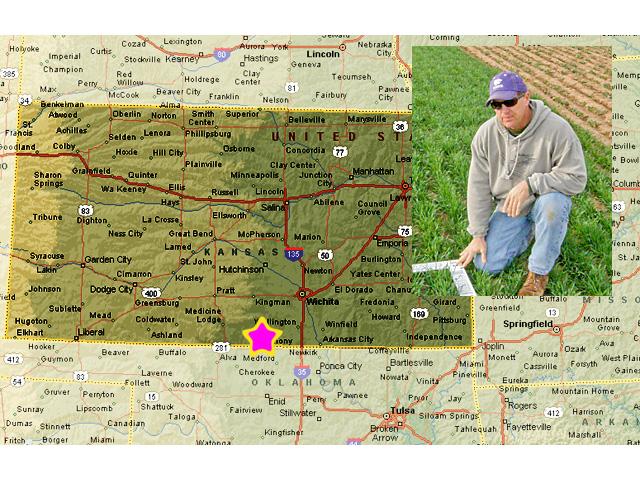Rural Veterinary Shortages Threaten Livestock Health
Filling Critical Veterinary Gaps
Veterinarians are a critical part of the livestock industry. They diagnose and treat illnesses, advise on animal nutrition and herd management, and help prevent disease through vaccination and biosecurity measures. But, lately, rural food animal veterinarian numbers have dwindled. This year, USDA has identified more than 200 areas across the country that are experiencing veterinarian shortages.
National and state-level programs are continually expanding to help drive veterinary students to rural areas and keep them there to provide the needed health-care access for livestock and animals in these areas.
"We are trying to cover a bigger area than we used to, which is a challenge," says Jesse Olsen, owner and veterinarian at Stillwater Veterinary Clinic, in Absarokee, Montana. "When we came to this area 12 years ago, it was a veterinarian-rich area, and now many have retired, and practices have closed, so it has changed in a short amount of time."
Olsen says one of the biggest challenges in south-central Montana is getting to clients in a timely manner because of the shortage of vets in the area. Stillwater's clinic hired another veterinarian in the past year to bring the total to four at the main clinic. A second location for small animal work is in Columbus, Montana. Since the practice doesn't have many veterinarians, Olsen says they ask clients to haul animals in if possible and will only drive out about 70 miles to get to clients for emergency calls. "We want to be able to provide the care needed, but it gets difficult when producers are so far away," he adds.
Olsen worked at a vet clinic during high school near the Billings area, but when it came time to go to college, he decided to major in engineering. After a year of those studies, he then changed over to animal systems technology at Montana State University. After that, he earned a master's degree in animal science, focusing on reproductive endocrinology in beef cattle. Olsen attended veterinary school in Washington state and then headed back to Montana where he and his wife, Tierney Olsen, who is also a vet, began practicing in Billings.
It wasn't until he realized he could qualify for grants through USDA to help pay for his veterinary schooling that Olsen knew he'd be able to be more comfortable in a rural Montana practice, where he is now.
USDA's Veterinary Medicine Loan Repayment Program (VMLRP) is a very competitive grant program, Olsen explains. It allows qualified vets to help pay a portion of the debt they incurred from receiving their veterinary medicine degree if they service areas of high-priority veterinary shortages. Those awarded receive up to $120,000 toward student loan debt in exchange for staying in these vet-short areas for three years of service.
He says state veterinarians across the country can nominate certain areas of their state as an underserved food animal veterinarian area. South-central Montana qualified, and Olsen received the grant, which he has been able to renew to help repay his student loans. This will help keep him in this underserved area.
P[L1] D[0x0] M[300x250] OOP[F] ADUNIT[] T[]
MANY AREAS HAVE VETERINARY SHORTAGES
According to the American Veterinary Medical Association (AVMA), USDA identified 243 veterinary shortage areas in 46 states in 2025. The use of the VMLRP in these areas helps protect the livestock industry and the agricultural economy.
The AVMA has also worked to get the Rural Veterinary Workforce Act reintroduced in Congress. The bipartisan legislation is designed to help recruit and retain veterinarians in underserved and rural areas.
"Recruiting and retaining veterinarians through the Rural Veterinary Workforce Act is key to protecting our nation's food supply, preserving animal welfare and upholding public health," says Dr. Sandra Faeh, AVMA president. "Livestock and public health veterinarians are essential to strengthening the nation's animal health infrastructure and agricultural economy. We urge Congress to address this increasingly important issue by passing the Rural Veterinary Workforce Act."
The legislation would expand the Veterinary Medicine Loan Repayment Program and end federal taxation on its awards of up to $120,000 over three years. This change would align the tax code with human health care professions, allowing more veterinarians to serve in USDA-designated shortage areas while addressing their educational debt. Only 883 veterinarians of the 2,197 applications have received the VMLRP since 2010.
U.S. Rep. Adrian Smith, from Nebraska, stated in an AVMA news release that the record shortages of veterinarians, especially in rural areas, could cause serious harm to the health of animals and the public. By providing additional funding to the VMLRP and updating the tax code, more veterinarians will qualify for this program.
"Veterinarians are vital to the work of America's farmers and ranchers, and the integrity of our food supply chain," Smith stated in the release. "Yet many areas of the country suffer from lack of access to their services. This bipartisan bill would make commonsense tax relief available to veterinarians who choose to live and work in the communities which need their help to care for their livestock and protect the agriculture industry from pests and disease."
CRITERIA MUST BE FOLLOWED IN ALL PROGRAMS
Many states also have their own programs to help veterinarians with loan repayment. To receive these awards, veterinarians must meet the criteria set for the specific state. One commonality with the state programs is the requirement that awardees must stay in that state for a set amount of time. Olsen says that with his USDA grant, he is required to report each quarter to show he has met the requirements set.
"With student loans, buying into a practice and buying land for a place to live, my family needed help, and I know this isn't uncommon," he says. "I wanted to practice food-production livestock, and with that comes less money, in general, than small animals, since you usually can't work on as many in the same amount of time. This program is a big reason I can do what I want to be doing."
Olsen says he's thankful for programs that help veterinarians, because once reality sets in after vet school is done, most will see how much debt they are carrying. "The tough part about rural large-animal veterinary work is it doesn't pay as well as some producers might think," he adds. "There are long hours, and a lot of time is spent at the clinic. Sometimes, we must prioritize what works for the practice and our lifestyle."
Getting new vets to join a practice takes good mentorship and fostering a work-life balance to keep them from getting burnt out. That -- along with financial assistance to help pay off debt -- is important to Olsen for the long-term success of his rural practice and to see more vet students cover underserved areas.
**
-- Jennifer Carrico can be reached at jennifer.carrico@dtn.com
-- Follow Jennifer on social platform X @JennCattleGal
[PF_0625]
(c) Copyright 2025 DTN, LLC. All rights reserved.




